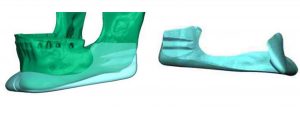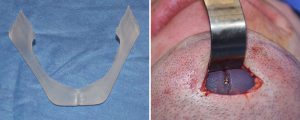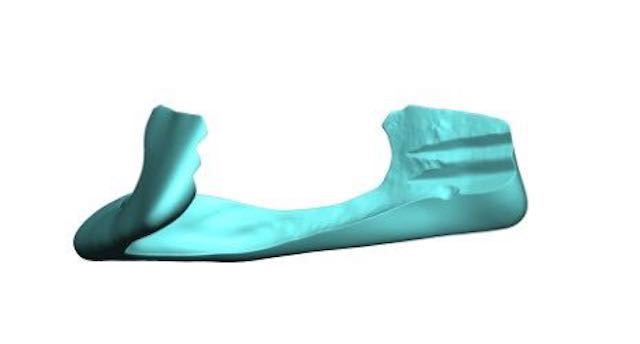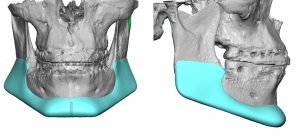Background: The custom jawline implant provides the most significant augmentative changes to the lower third of the face. Designed from the patients’s 3D CT scan, the entire shape of the lower jaw from angle to angle can be changed by altering the shape of its inferolateral bony contour. These type of implant changes are only limited by the capability of the overlying soft tissues to safely contain them.
One very important, but not obvious, consideration of a custom jawline implant is whether it can be surgically installed and positioned as it is designed. It is important to note that a custom jawline implant is a large implant, virtually the largest that can be made for the face, and one doesn’t have the luxury of placing unlimited incisions to get it in place on the bone.
One tremendous property of a silicone custom jawline implant is that it is flexible due to the material characteristics. (when not on the bone) This flexibility creates the possibility of allowing it to be introduced through smaller incisions than would be possible if it were not so. This flexibility also plays a critical role in whether the implant can be placed as one intact piece….and this is most importantly seen at the jaw angle portion of the implant.
Case Study: This young man desired to enhance his jawline with a custom wrap round jawline implant. He wanted to ‘square out’ or make his jawline more angular at the corners.


There is more to a custom implant design than just the dimensions of the implant and what external aesthetic effect it may create. Design considerations often include midline markers, positioning/oeientation tabs and methods to aid in its insertion and intrapocket positioning.
Case Highlights:
1) A custom jawline implant provides an expansion of the entire outer cortex of the lower jaw in exerting its aesthetic effects.
2) Placement of custom jawline implants must take into consideration how they can be placed as design with the least incisional load as possible.
3) Part of the design process can incorporate placement strategies to allow custom jawline implants to be placed as a single piece implant.
Dr. Barry Eppley
Indianapolis, Indiana




